Meet our TBMs
To dig the main CI tunnel and lay the concrete segments behind it, we’re using state-of-the-art tunnel boring machines or TBMs. Infrastructure constructed by TBMs is strong and reliable, enabling us to excavate through a wide range of ground conditions.
TBMs are traditionally given female names in honour of the patron saint of miners and tunnellers, Saint Barbara. To find a name for our main TBM, we asked children at schools along the tunnel route for ideas. They chose Hiwa-i-te-Rangi, a female Matariki star connected to the promise of a prosperous season. The children thought this name best represented our project’s aspiration to improve the natural environment.
Hiwa-i-te-Rangi
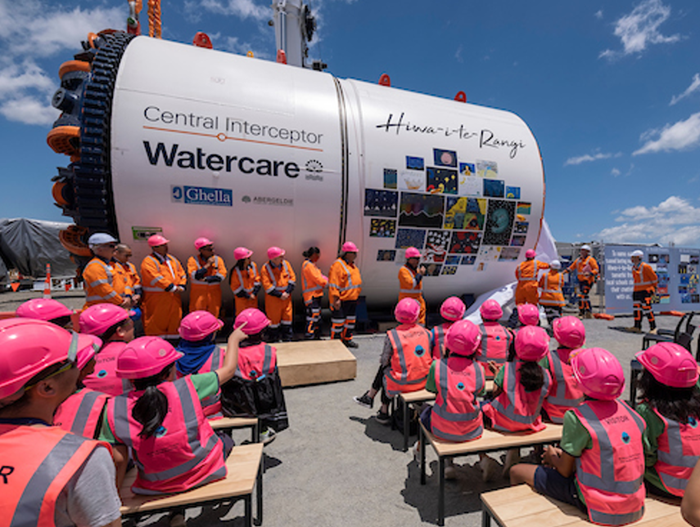 Photo: Hiwa-i-te-Rangi is unveiled to Auckland school children
Photo: Hiwa-i-te-Rangi is unveiled to Auckland school children
Hiwa-i-te-Rangi is on her 14.7km journey north from Māngere to Grey Lynn. To bore the tunnel, she uses a massive cutter head - 5.4m in diameter - to grind through a variety of different soils and rocks. This spoil is then transported back to the shaft in skips and lifted out of the tunnel. The spoil is then trucked to Puketutu Island in Māngere to help restore the original volcanic cone. We truck up to 5,000m
3 of spoil a week - that's enough to fill up more than 150 six-metre-long sea containers. One day this island will be opened to the public as a regional park.
As she digs the 14.7km tunnel, Hiwa-i-te-Rangi will lay 9,000 precast concrete segment rings - each is made up of six interlocking pieces. The resulting 4.5m-diameter pipe has a durable lining which protects the concrete from corrosion over its 100-year lifespan.
Domenica
We also have a second TBM, a micro version named Domenica. She is named after members of the contractor’s Ghella family who helped found the company. Domenica is boring two link sewers at depths ranging from 12m to 70m, with a combined length of 4.3km.
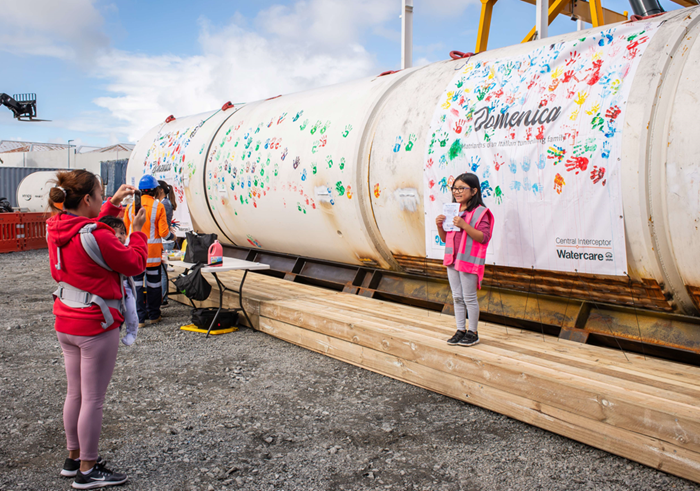 Photo: Our micro-TBM Domenica proved popular at her farewell ceremony before she headed underground
Photo: Our micro-TBM Domenica proved popular at her farewell ceremony before she headed underground
Link Sewer C, which runs from May Road in Mt Roskill to Miranda Reserve in Avondale, will have a 2.1m internal diameter. When Domenica finishes that sewer she'll move to our Mt Albert War Memorial Reserve site where she will be widened to 2.4m to bore Link Sewer B.
Domenica builds her tunnels with fully-constructed concrete pipes using a system called pipe jacking. This involves lowering each pipe into the shaft behind the previous one. A hydraulic jacking rig pushes it forward and this gives the TBM her cutting momentum.
Tunnelling work is tough and our crews stay underground for their entire shift as they tunnel 24/7. Give a thought to them as you’re tucked up in bed at night.
Victoria
We launched our main TBM Hiwa-i-te-Rangi in August 2019, then in June 2021 Domenica set off to bore Link Sewer C. Now, we’ve added a baby to the family, though she’s still a decent size at 10m long, 1.1m diameter, and weighs 12 tonnes. Victoria is too small for a person to physically sit inside and operate, so she is manoeuvred by remote control using hydraulic lines known as umbilicals.
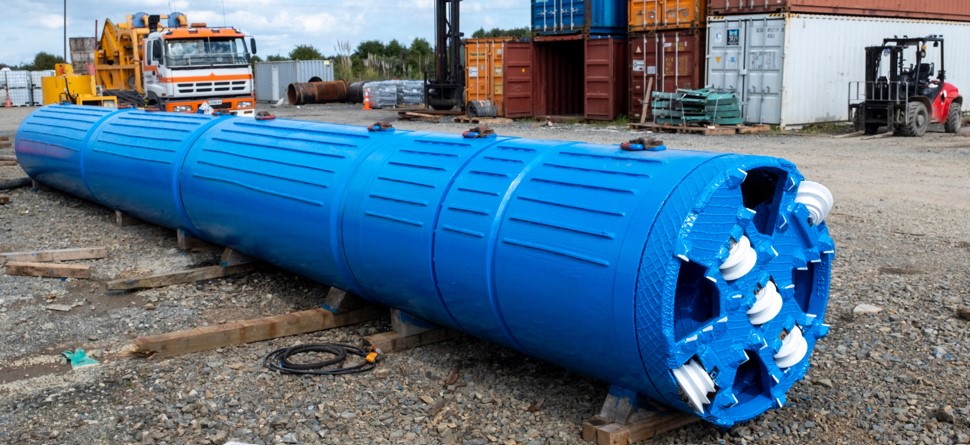
All our TBMs have female names, so we asked Hay Park School students for some help to choose the name ‘Victoria’. The students had four Roman goddesses to select from as Rome is home to one of our main contractor parties, Ghella. At a naming event in August, the students chose Victoria who is the goddess of victory.
Made in Germany, Victoria arrived by ship in July, fresh from her last tunnelling project in Buenos Aires. She has been refitted to construct two new pipes using a method called pipe-jacking. First on her to-do list is branch 9B diversion that runs between new chambers and manholes at Keith Hay Park North. She’ll be busy tunnelling under the motorway to somewhere near Mt Roskill schools. The deepest Victoria will bore is 9-metres. She’ll then bore a new pipe from our main site in the car park to Richardson Rd. This work will cater for new Kainga Ora housing in the wider area.
What’s the CI tunnel built of?
The tunnel has an internal diameter of 4.5 metres, with an external diameter of 5.46 metres. The tunnel itself is constructed of 1.6m-wide tunnel rings, made from precast concrete by local company Wilson Group in East Tamaki. The Central Interceptor tunnel will use more than 9,200 rings, each comprising six segments, weighing three tonnes each. That equals some 55,200 segments.
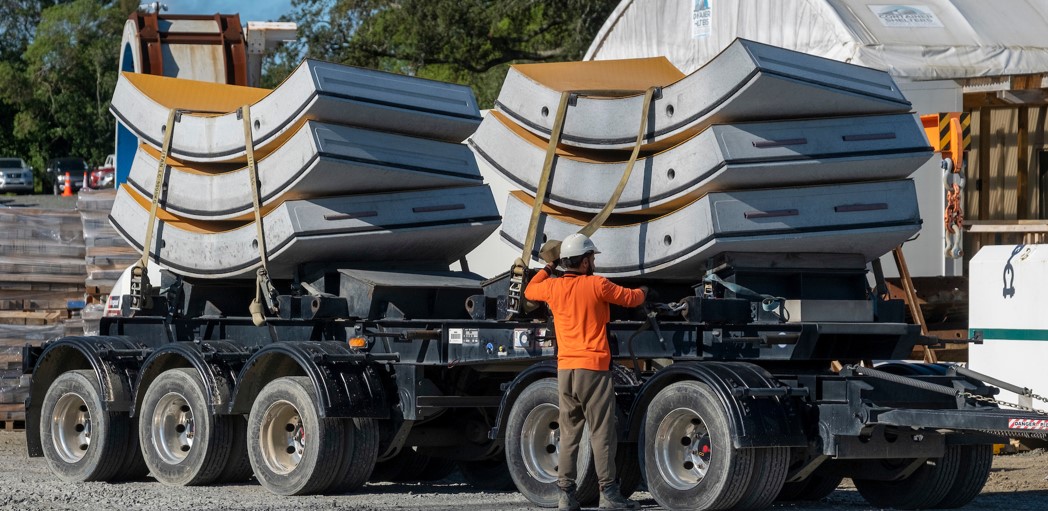 Photo: six segments for just one ring makes a big load
Photo: six segments for just one ring makes a big load
The segments are lined with 3mm of a special polyethylene lining to prevent corrosion of the pipe. The segments are five different colours to represent differences in the ecological condition of the ground our TBM is boring through.
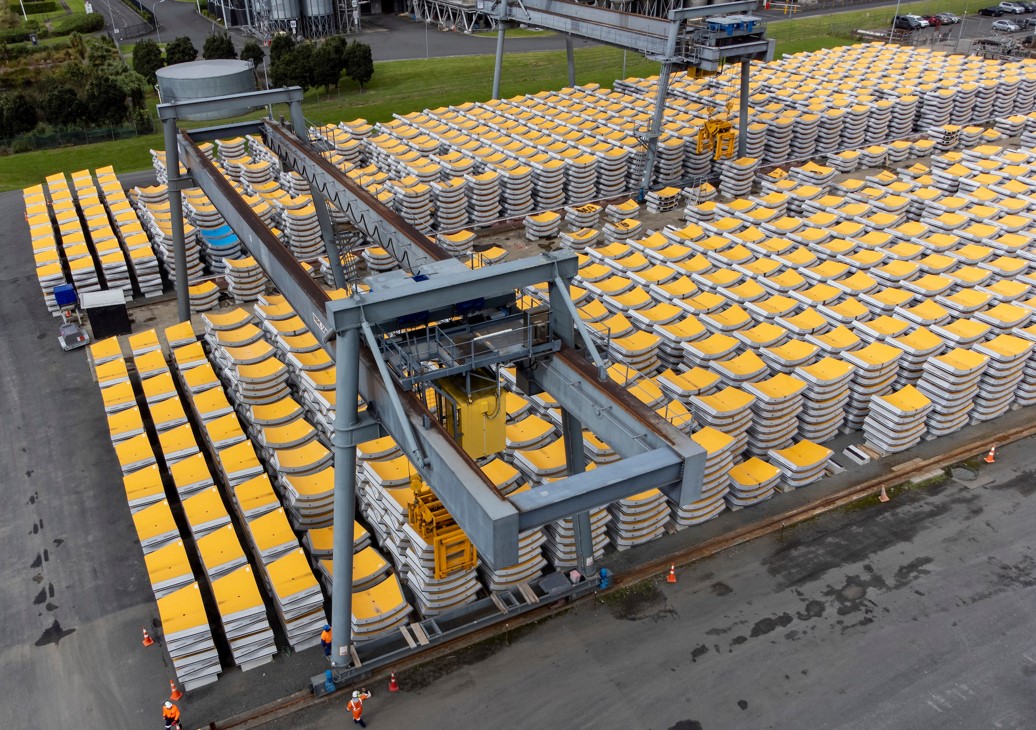 Photo: part of Wilson group's segment storage area
Photo: part of Wilson group's segment storage area
Our training TBM honours a pioneering woman of New Zealand education
Around the world, there is a tradition of giving female names to tunnel boring machines. We saw the arrival of our full-size training TBM in 2020 as an opportunity to honour a female New Zealand trailblazer.
Kate Edger was the first woman to gain a University degree in New Zealand. She achieved a Bachelor of Arts in Mathematics, with the degree being awarded on 11 July 1877. The next year, Kate became the founding principal of Nelson College for Girls, and in 1890 she moved to the capital and was active in women’s education and social issues of the day, including the female suffrage movement.
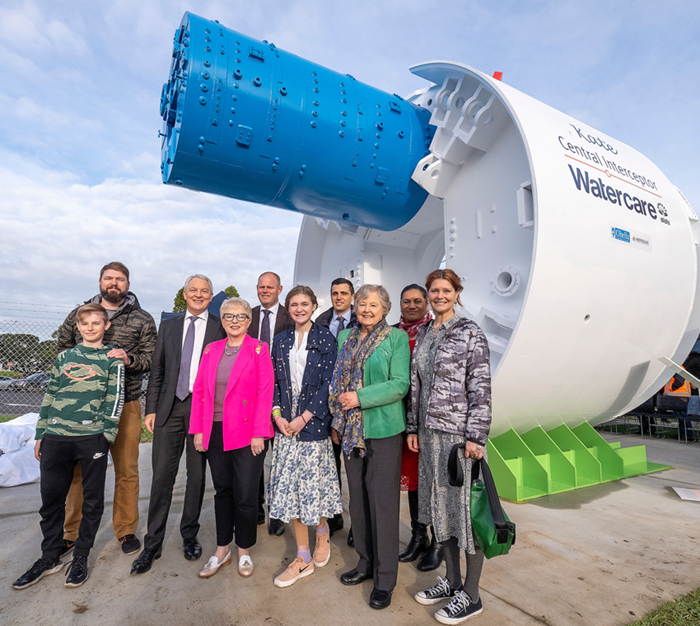 Photo: Kate's family with the official party at the unveiling of the training TBM
Photo: Kate's family with the official party at the unveiling of the training TBM
To celebrate the training TBM’s arrival, more than 100 local elected members, Watercare directors, industry representatives and project staff joined Auckland’s Mayor and our directors for a dedication ceremony. Special guests of honour were trustees of the Kate Edger Educational Charitable Trust and three generations of Kate’s family - from granddaughter to great, great grandchildren.
The Trust’s lond-standing purpose is to help further higher education for women by providing financial help. Watercare and Ghella Abergeldie JV were pleased to donate $5,000 to enable the Trust to provide assistance to a female engineering student in the Auckland area. In April 2021, the first recipient of the award was Maya Ranzinger who is in her second year of study at Auckland University of Technology.